Opening in 1846 makes the Royal Botanic Gardens in Melbourne the oldest entry yet on Vintage Victoria. Lamps, lakes, gates and cottages make it an exciting place to explore 175 years on.
My experience at the gardens
Compared to the other botanic gardens in Victoria that we’ve visited so far, Melbourne’s Royal Botanic Gardens are immense. It took at least an hour just to do a quick walk around the perimeter paths, hardly pausing at all for the intriguing narrow pathways that wended their way off the main routes throughout the gardens.
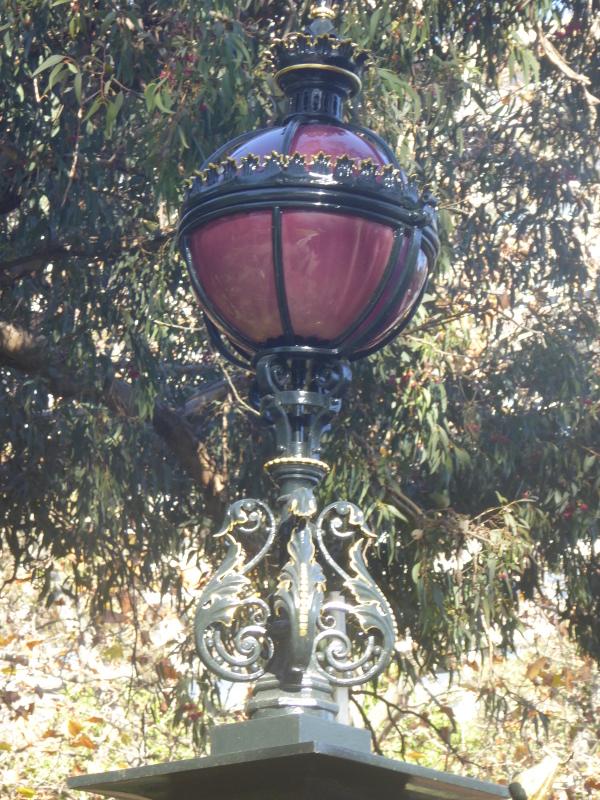
It was good also to have done my research before coming; to know about the famous Baron Von Mueller, whose name is associated with so many of the other gardens around the State, but who sounds as if he was a bit of an academic, who saw botanic gardens as purely educational or useful for scientific purposes.
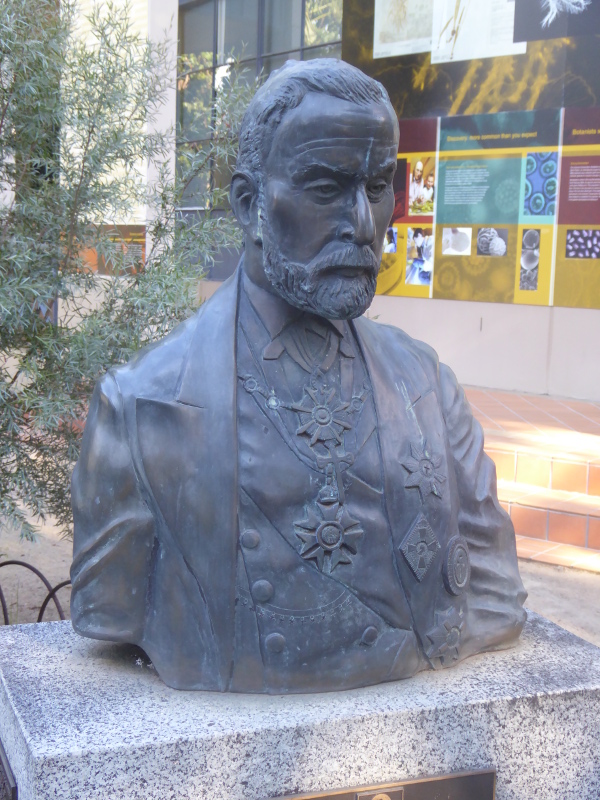
There was a fair amount of dissatisfaction at the state of Melbourne’s botanic gardens until that other name associated so closely with Victoria’s botanic gardens turned up. William Guilfoyle is the man responsible for the overall look and feel of the gardens today.
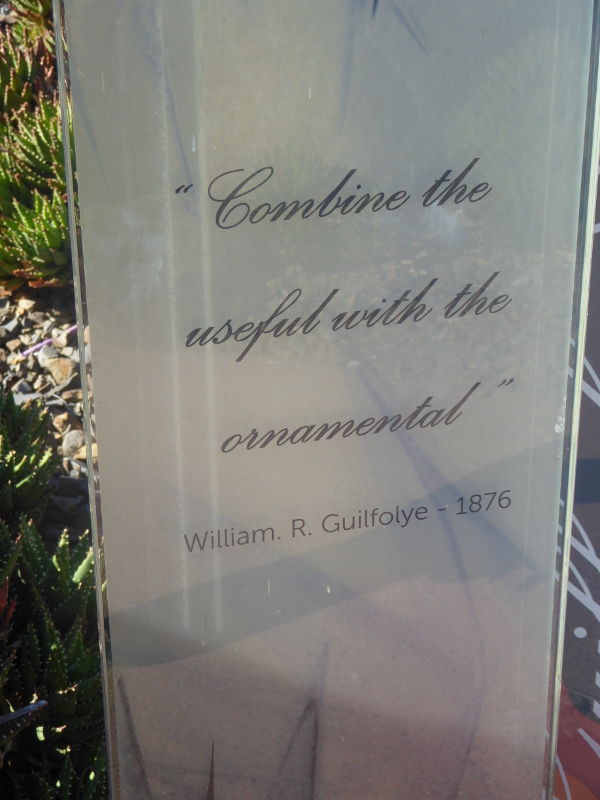
There is a motto of his on display by what’s called the Guilfoyle Volcano, which aptly sums up how he saw botanic gardens as combining education and learning with pure pleasure.
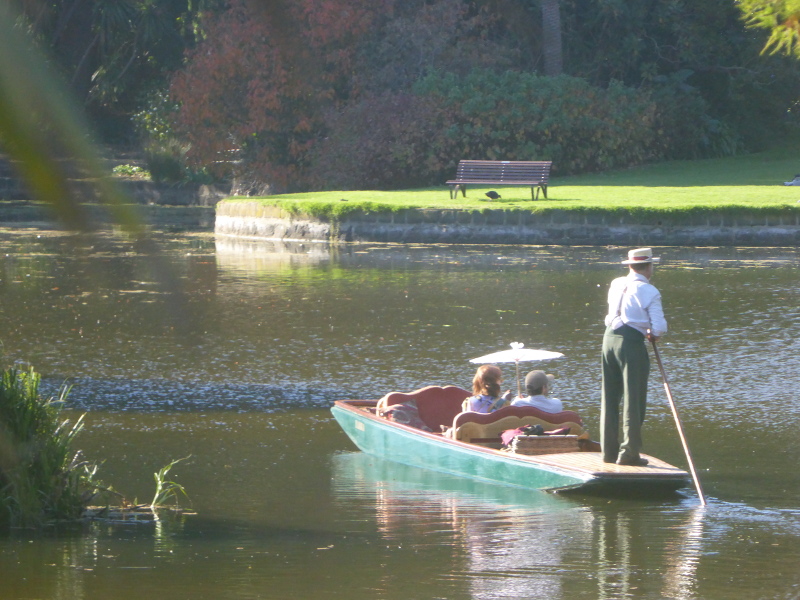
On this warm autumn Sunday, I’d say the vast majority of people in the Botanic Gardens were here for pleasure, whether having a romantic stroll as a couple, joining a bigger picnic party spreading out on the lawns, or even as part of a wedding ceremony I saw going on in one corner. Gosh, there are even boat trips (what Venetians call gondolas and Oxbridge types call a punt) and they were fully booked on the day I was here.
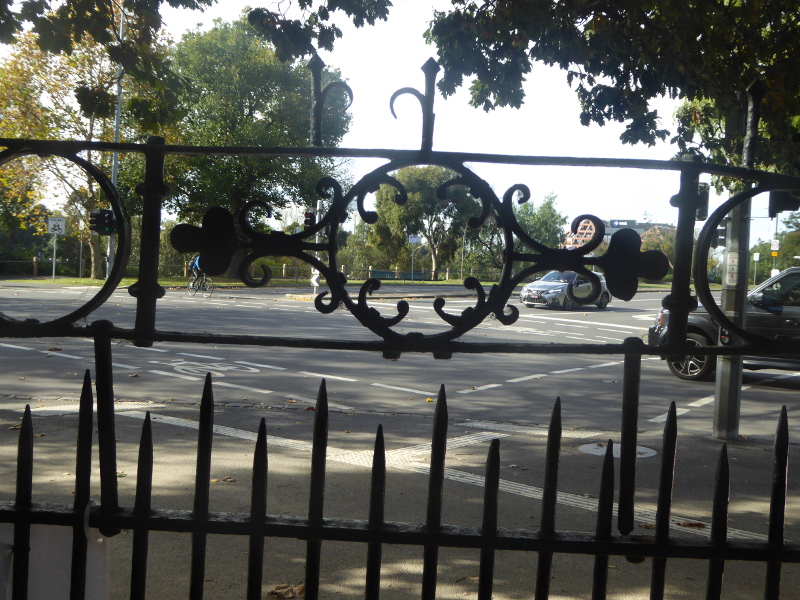
Another complaint in the early years of these gardens was that there was no really magnificent gated entrance. It was said that the dozen or so ways in all felt like back door entrances, with fairly modest ironwork, certainly compared to many other provincial botanic gardens in Victoria.
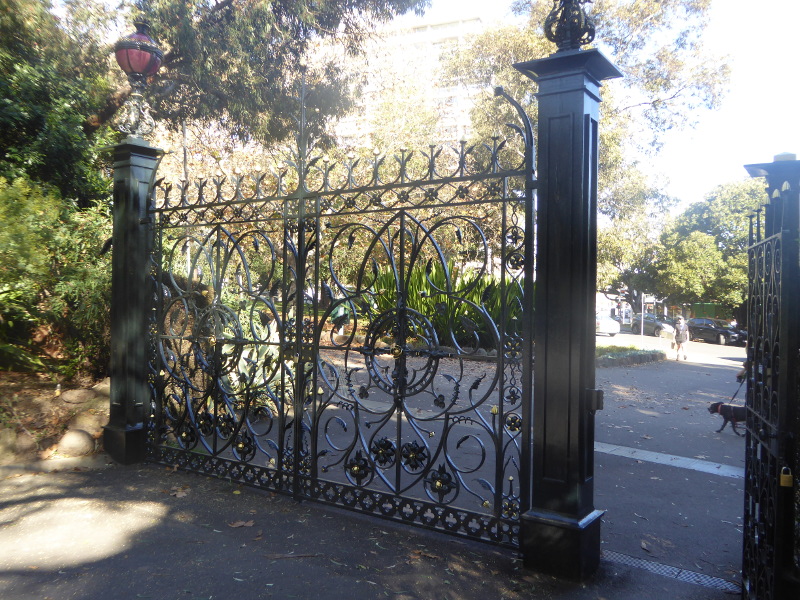
So, imagine my delight when I came across these beauties over on the south side of the gardens. But the signage revealed that, although they are certainly vintage iron gates made “in England” (I wonder where?) in 1906, they actually belonged to the Simmons family in Toorak, who donated them to the Royal Botanic Gardens in 1966!
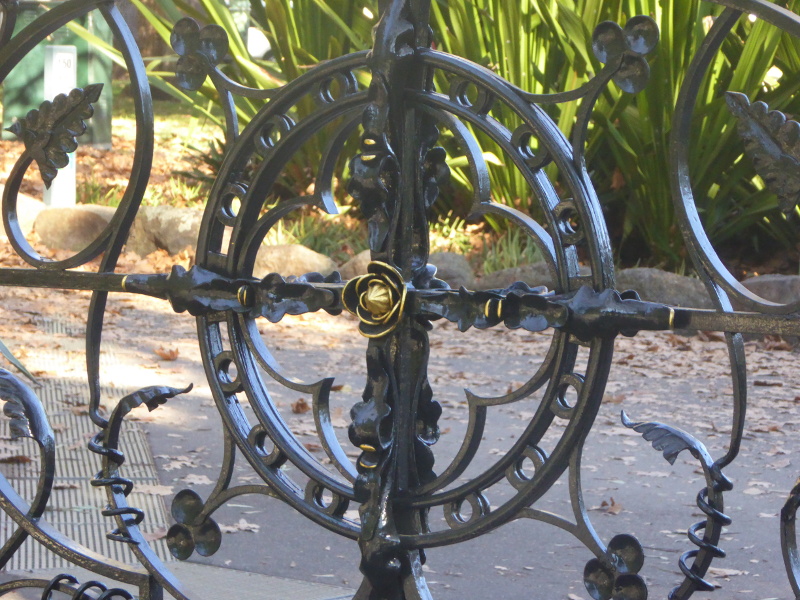
I entered by the corner gate high up by Anderson Street, just across the road from the superb 1899 Morell Bridge.

I checked the map of the whole Gardens and made straight for the Separation Tree, which is just a couple of hundred yards down into the heart of the Gardens. At first, I thought it must be a rather impressive lime (linden) tree under which quite a crowd had assembled, but then realised that, no, the Separation Tree, marking the spot where Victoria’s independence from New South Wales took place in 1851, is in fact this now dead but imposing forked trunk across the path from the crowd.

Nobody else was looking at this, which I guess goes to show things have moved on in the last 160 years, but at least there is a plaque to mark the spot. I must say, given the ongoing rivalry (mistrust even?) between Victorians and New South Welsh people, I’m surprised that more isn’t made of this old tree…
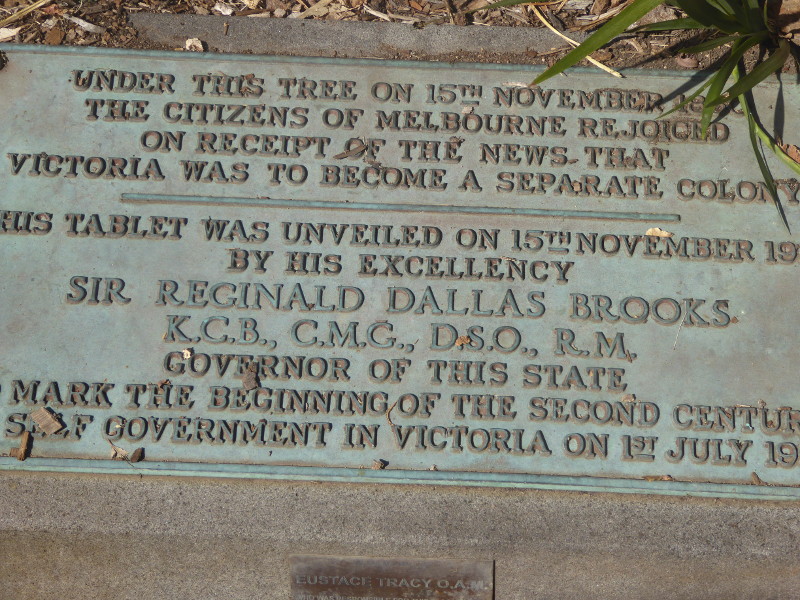
From there I headed to Guilfoyle’s Volcano. Now, don’t be looking for some conical mountain here. The reservoir is elevated, and it is all designed to use recycled water and irrigate down the slopes, but I can’t say I was thinking of volcanoes as I took the path snaking its way around the area.

A lot of the plants in this section of the Gardens are cacti, and I’ve never been a big fan. These flowering succulents did draw the eye, though, and maybe the increasingly dry climate round Australia is a sign of things to come.

Certainly, at this point of my tour of the Gardens, I did get the impression the educationalists haven’t given in to the pleasure seekers just yet. There are constant references to climate change and the need to adapt – I guess such invocations are necessary in a country where half the population still doesn’t really believe in climate change…
I did enjoy reading how the original Guilfoyle ‘volcano’ had been built in 1876 but had been rather neglected from the Melbourne Olympics year of 1956 until this new concept was developed in 2006.
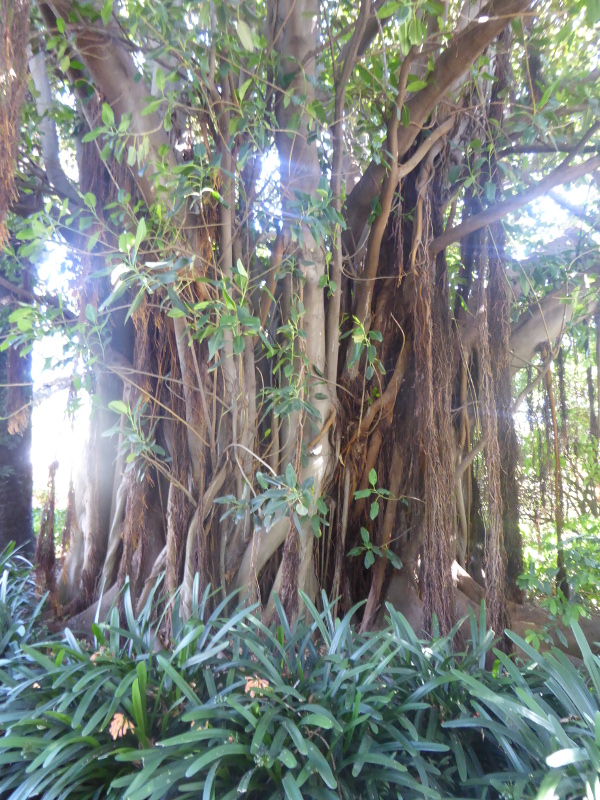
The Royal Botanic Gardens are almost too big, with too many flower beds and enormous trees to focus on any in particular. But I was struck by this the biggest Moreton Bay Fig I have ever seen. You really could drive a horse and coach through this one.

I stuck my head briefly inside the glasshouses, such a rare treat in Australian botanic gardens, but somehow from my childhood experiences of gardens in cold, damp Yorkshire, an exotic necessity for botanic gardens to be botanic. And yes, the steamy smell still hits as soon as you open those doors. Strict limits under Covid, though, to how many are allowed in at any one time.
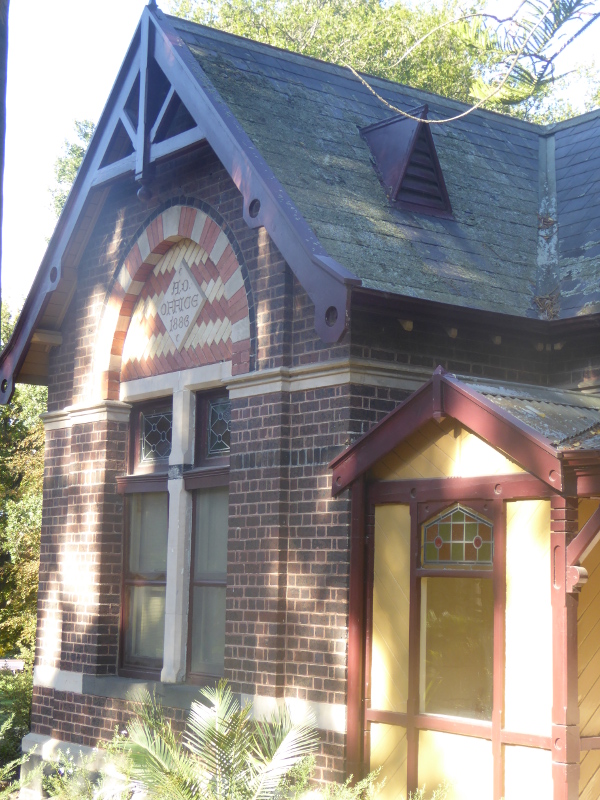
There aren’t too many vintage structures or buildings around Melbourne’s Botanic Gardens. A few of the gardener’s lodges have survived, though (there were at one point 7 gardening families living at different points around the Gardens).
The 1886 head gardener’s home was designed, apparently, for him to keep an eye open for ‘unprincipled larrikins’ entering the Gardens.
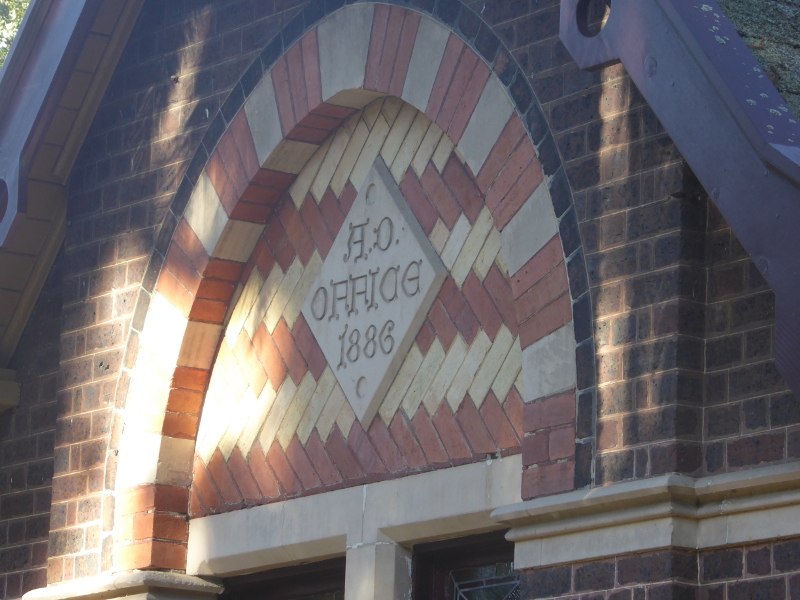
The 1886 lodge is also attractive, though it has no information board to tell us more.
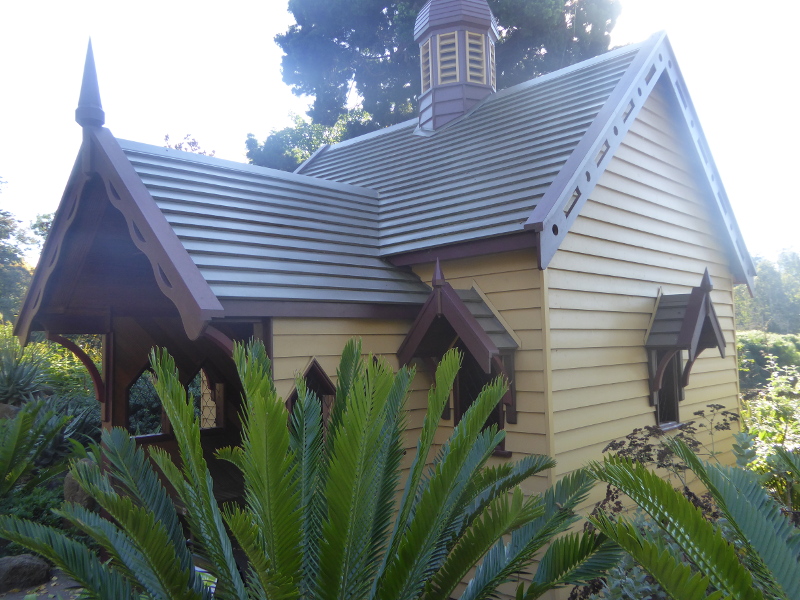
And then on the far side of the Gardens, as far from Anderson Street as it’s possible to be within the Gardens, there is the Observatory Gate.
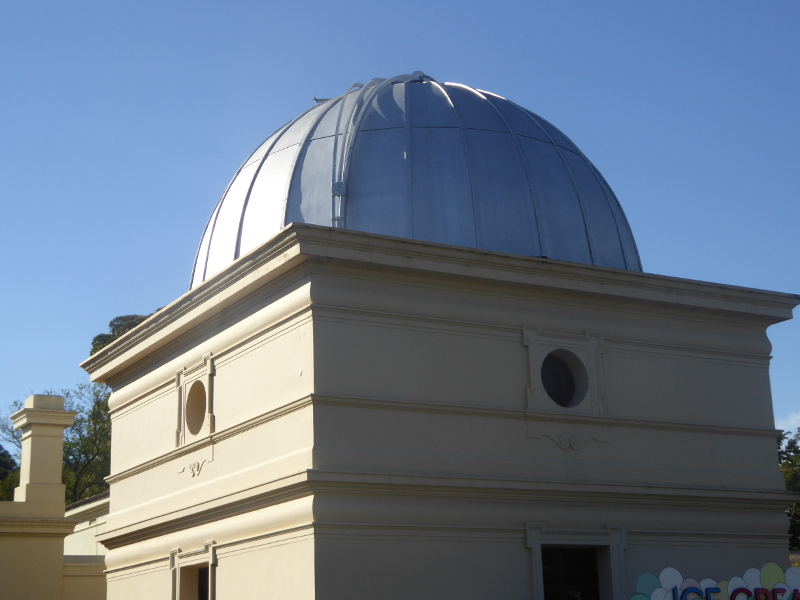
Just a personal memory here. Back in 1967, when I had my first ever visit to Melbourne as a small child, I was taken to this observatory and became an instant astronomy fan at the age of 7. I still have my Australian night sky map given to all visitors in those days, and still have a telescope which gets out to star gaze (or more frequently planet-gaze) when the time is right. So, fond memories for me of this building on the edge of the Gardens.
I’d like to have had more time to take every path in these Gardens and make sure I missed nothing.

I’d also like to have had time to sit on a lawn or a bench and read for a while, to give myself head space to think of those poor souls murdered for no good reason on a day just like this almost 100 years ago (see History below, if you are not aware of that incident).
I’m sure I’ll manage that on a future visit, as there surely must be. I’d like to come back on a quieter day, maybe in spring when the first flush of roses are in bloom, and maybe take the riverside walk back into the City instead of the train from Richmond, which was rammed full of footie fans on this particular Sunday.
It’s good to want to come back, though, isn’t it?
Practicalities
The Royal Botanic Gardens are not that easy to get to on public transport. I took a train to Richmond and then walked the 10 minutes or so to the Gardens gates. Anyone know a better way to get closer?
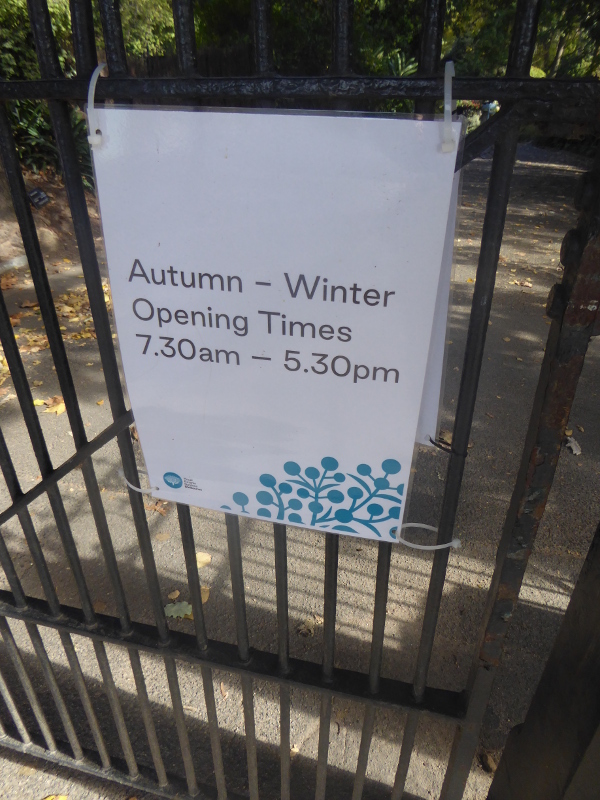
Above are the autumn/winter opening hours. Again, comment below if you have the spring/summer times?
Several toilet facilities around the gardens – check the maps of the gardens by many of the entrances.
History and stories
The first suggestions of creating a botanic garden in Melbourne came in 1841 from a botanist called Mr Bunce. He wanted 25 hectares near the ‘government paddock’ to create a space equal to that already existing in Sydney.
Funding was the issue in causing delays, and Melbourne politicians reacted with anger when public funds were set aside for maintaining Sydney’s botanic gardens, but not a penny allowed to have anything similar put in place in Melbourne.
Finally, the go-ahead was given and the site chosen by the end of 1845.
In 1846 the first section cultivated was off Anderson Street and as far as the ‘rustic bridge’ over the lagoon brought in some years later.
The first real event reported on in the newspapers was a fund-raising concert, attended by 1200 people in 1853, in aid of the Melbourne Hospital. The correspondent sent to cover the event was none too pleased, however, complaining that the rustling of leaves in the strong wind meant most of the audience could not hear the female singers; and he was most put out at the extent of intoxication among the men attending, not to mention the cloud of tobacco smoke, which would deter most ladies from ever coming again, he reckoned.
The same year, the government botanist Dr Mueller, who influenced many of the Victorian botanical gardens, spoke of Melbourne’s gardens as providing the people of Melbourne “agreeable and intellectual relief from the dust and turmoil of our crowded thoroughfares and bustling wharves.”
In 1859 – just three years after the end of the Crimean War- two Russian cannons, captured by the British at Sebastopol, were presented to the Botanic Gardens in Melbourne – are they still there? I didn’t see them…
In 1859 there were alpacas living in the Gardens, and calls to provide them with sheds…
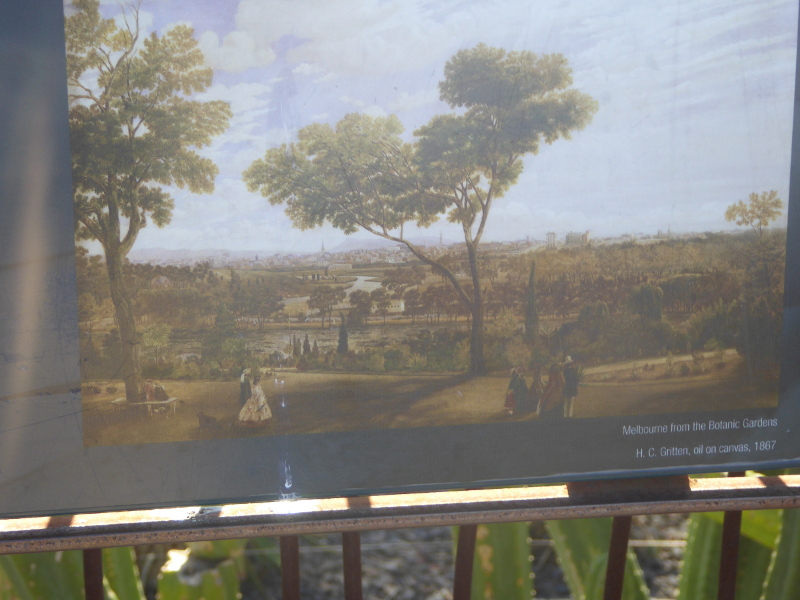
By the 1870s, there was disagreement over whether the Melbourne Botanic Gardens were adequately serving their purpose. Even the great botanist Dr Mueller came under fire for his prioritising plants’ usefulness over the pretty blooms that the average visitor to the gardens wanted. The row went to the heart of the dilemma over why botanic gardens were established in the first place: were they for education and science or for pleasure and repose? Some thought they could serve both purposes, and I would definitely have taken this position if the debate were going on today.
In 1873, William Guilfoyle took over from Von Mueller as Gardens Director. The broad, curving pathways date from Guilfoyle’s time. He stayed in the job until 1909, for 36 years.
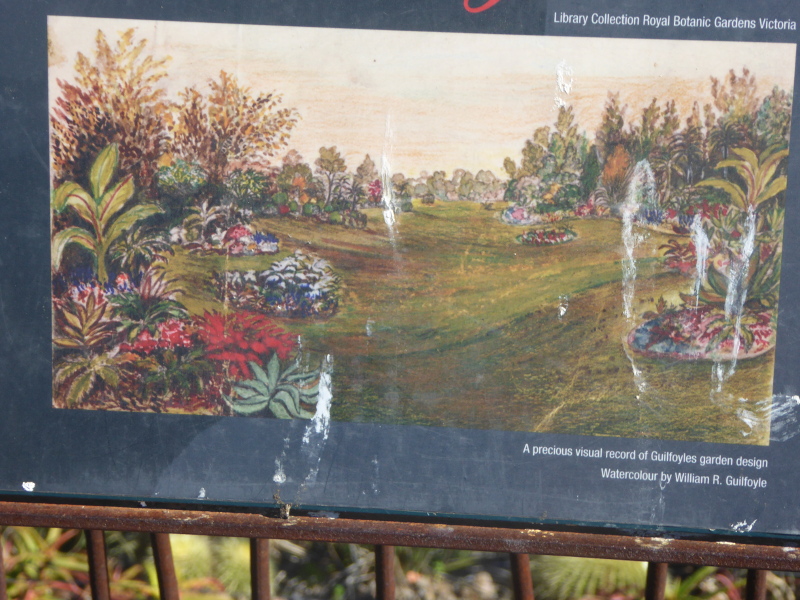
There were big improvements in how the gardens were perceived by the average public, but they still had their critics even after a year of Guilfoyle’s work. There was no grand entrance, just a series of gates that feel like back entrances all around the perimeter, said one commentator in 1874.
1880 saw the first gruesome incident in the Gardens, when the body of a man in his 40s was found under the bridge in the Gardens. He was not identified, but the third finger of his right hand was missing. In November 1915 a retired farmer shot himself in the head in the botanic gardens.
At some point early in the 1900s, the Yarra River was diverted, creating the Gardens lake, and leaving more space for planting once the soil had been rid of chemicals that once lay on the bed of the river as it flowed through the city.
1924 saw the biggest tragedy to hit the botanic gardens in Melbourne: a shooting massacre. It was a mysterious, but utterly dreadful case, involving a young man who randomly shot dead five people who were spending a relaxing time in the Gardens on a January afternoon. Among those who lost their lives were a woman just sitting on a bench crocheting, another woman reading a book under a tree, and a 75 year old Irishman who had only been in Australia a few days. The suspect was found dead himself near a river in Gippsland some time later – his motive or breaking point were never discovered, and it was also never known if he had an accident while trying to avoid capture or committed suicide.
Fifteen botanic gardens in Victoria were chosen to receive funding for major improvements in the mid-1980s, as Victoria celebrated its 150th anniversary, and car registration plates bore the motto “The Garden State”. There was backing from several major German corporations, in recognition of the contribution from Baron Von Mueller, who helped design many of the gardens, and was director of Melbourne’s botanic gardens in the early years.
What are your experiences at Royal Melbourne Botanic Gardens?
Does anyone just have a good memory they’d like to share about a visit to Melbourne’s Botanic Gardens, even from the last few months or years?
Does anybody know where in England those Simmons family of Toorak gates were forged?
Are the Crimean War cannons still in the Gardens? Did I miss them? If not, whatever happened to them, and when?
Can anyone fill in with any stories about things that happened in or around Botanic Gardens to bring my history section beyond my last story from the Trove database (1980s)?
Other links and writings on the Royal Melbourne Botanic Gardens
I loved Geoff Harrison’s entry on the Botanic Gardens, as he managed to find lots of old photos to post alongside contemporary shots.
The We Love Melbourne site also loved the Botanic Gardens.
This Garden Visit website highlights gardening aspects of the Gardens.
There’s a very active Friends of the Royal Botanic Gardens website.
The Only 1 in Village site has lots of useful practical details on the Gardens.
I was really interested to see this Halal-friendly approach to visiting the Botanic Gardens.
The Volcanism blog, meanwhile, focuses more on the Gardens’ ‘volcano’…
And finally, this dates from 2017 but Yellow Productions have produced a nice video tour of the Gardens on You Tube.

